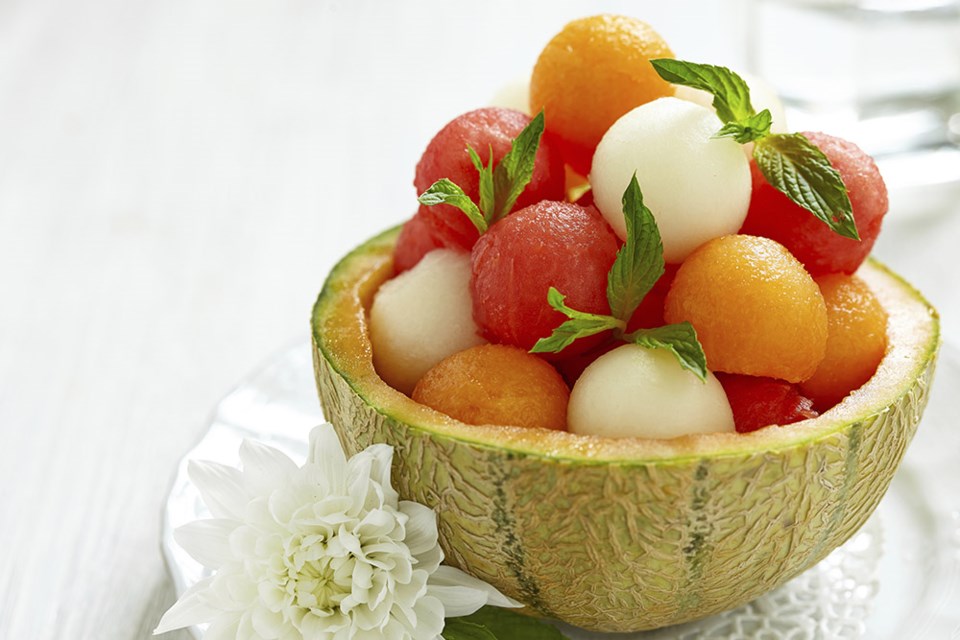One of the favourite foods to help combat the heat of the summer sun is chilled slices of melon. Seeing kids with watermelon juices running down their chins as they submerge their appetites into the cold juicy flesh is a sure sight at almost any outdoor activity. Although watermelons are the most popular suppresser of the scorching temperatures, many also choose cantaloupe, honeydew, or casaba melons to fulfill this activity. Casaba melons are similar in size and shape of cantaloupes and honeydews but are recognizable by their wrinkled yellow skin. They are not smooth like honeydews nor do they have a netted shell like cantaloupes. The sweet flesh of the casaba can be white, yellow or orange, but it is not as sweet as honeydew, and not as aromatic as cantaloupe. Melons make a great summertime snack as they have a high water content to replenish our overheated bodies along with a low calorie count. One diced cup of any of these four varieties will account for approximately 45 to 65 calories. Honeydew being the highest in calories because of higher sugar content, and watermelon only ranking 45 due to, you guessed it, the highest water content. Even though each of these four melons has its own attributing nutritional factors, cantaloupes seem to be the most nutritious of the group.
Let's investigate vitamin A, for example. Cantaloupes have an extremely high amount of vitamin A (approx. 5411 IU per cup), while watermelon offers 865 IU, honeydew only 85 IU, and casabas usually don't have any. Vitamin A is typically found in abundance in darker-coloured fruits and vegetables and helps to promote the maintenance and growth of healthy skin and hair. It is also necessary for proper development of teeth and bones. Cantaloupes also have the highest vitamin C (with twice the amount of honeydews), and the highest in minerals potassium, phosphorus, and magnesium. No matter what melons you decide upon, a melon baller will assist in creating a great presentation in your next fruit salad or as frozen balls of fruit in a summer drink. Garnish your creations with some chilled local fresh berries and you will have a delicious low fat snack to help combat the summer heat.
Dear Chef Dez: Someone told me that the outsides of cantaloupes should be washed before we eat them due to bacteria and salmonella poisoning? Is this true? If so, why, since we just eat the insides and not the skin?
Norma B. Langley, B.C.
Dear Norma: This is true. According to the Canadian Food Inspection Agency (CFIA), cantaloupes are grown at the ground level and their outer skin can become contaminated in the field by soil, contaminated water, wildlife, poor handling, or improperly composted manure. When we cut into melons, any bacteria on the outer skin can easily be transferred not only to your knife, cutting board, and serving plate but also to the inner flesh. The CFIA recommends as one precaution that before cutting fresh cantaloupes to thoroughly wash and scrub them with hot water using a clean produce brush. As further safety measures, it would be wise to wash your hands thoroughly before and after handling cantaloupes as well as the equipment used to prepare them. It is always better to be safe than sorry, and if they recommend this for cantaloupes, then I would assume these safety measures with all melons.
Chef Dez is a food columnist, culinary instructor cookbook author. Visit his website at www.chefdez.com. Write to him at [email protected] or P.O. Box 2674, Abbotsford, B.C. V2T-6R4.



